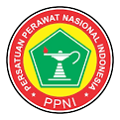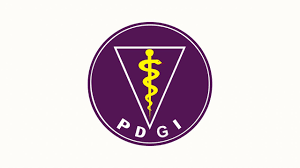Mikroplastik sebagai Kontaminan Anyar dan Efek Toksiknya terhadap Kesehatan
DOI:
https://doi.org/10.26630/jk.v13i1.2511Keywords:
Microplastic, Pathology, Plastic, Toxokinetics.Abstract
Microplastics are synthetic polymers that are unable to be completely degraded and will stay as an environmental contaminant for a long period of time. Due to their microscopic size, microplastics are able to enter the human body, either directly or indirectly via the food chain, where both processes will induce pathological changes in-vivo. So far, clinically, there has been no direct evidence yet about any microplastic-related disease in humans. However, since Indonesia is a maritime country and has been producing microplastics on a large scale, it is critical for our healthcare personnel to have the knowledge about microplastic toxicokinetics and the possible pathological responses elicited by humans when exposed to microplastics. This review article aims to discuss the definition, genesis, accumulation process, toxicokinetics, and pathological responses due to microplastic exposure, emphasizing the biomolecular aspects and implying the possible effects on public health. An internet search in Google Scholar and Pubmed was performed using keywords "microplastics" and "health", as well as their Indonesian language counterparts. Full-text English or Indonesian text from the year 2018 to 2020 were gathered and used as the primary references for this literature review. Microplastics are a novel emerging contaminant that is currently accumulating in the earth's biomass with the potency to induce pathological changes in the human body. Health practitioners are expected to have knowledge about the harm of microplastic to humans. Eventually, follow-up acts should be taken to prevent and manage the microplastic-related pathologies as discussed further in this review.References
Abbasi, S., Soltani, N., Keshavarzi, B., Moore, F., Turner, A., & Hassanaghaei, M. (2018). Microplastics in different tissues of fish and prawn from the Musa Estuary, Persian Gulf. Chemosphere, 205, 80-87. https://doi.org/10.1016/J.CHEMOSPHERE.2018.04.076
Alam, F. C., Sembiring, E., Muntalif, B. S., & Suendo, V. (2019). Microplastic distribution in surface water and sediment river around slum and industrial area (case study: Ciwalengke River, Majalaya district, Indonesia). Chemosphere, 224, 637-645. https://doi.org/10.1016/J.CHEMOSPHERE.2019.02.188
Beckett, W. S. (2000). Occupational Respiratory Diseases. New England Journal of Medicine, 342(6), 406-413. https://doi.org/10.1056/NEJM200002103420607
Bozza, P. T., & Viola, J. P. B. (2010). Lipid droplets in inflammation and cancer. Prostaglandins, Leukotrienes and Essential Fatty Acids (PLEFA), 82(4-6), 243-250. https://doi.org/10.1016/j.plefa.2010.02.005
Campbell-Lendrum, D., & Prüss-Ustün, A. (2019). Climate change, air pollution and noncommunicable diseases. Bulletin of the World Health Organization, 97, 160-161. https://www.ncbi.nlm.nih.gov/pmc/articles/PMC6357572/
Chang, C. (2010). The immune effects of naturally occurring and synthetic nanoparticles. Journal of Autoimmunity, 34(3), J234-J246. https://doi.org/10.1016/J.JAUT.2009.11.009
Deng, Y., Zhang, Y., Lemos, B., & Ren, H. (2017). Tissue accumulation of microplastics in mice and biomarker responses suggest widespread health risks of exposure. Scientific Reports, 7(1), 46687. https://doi.org/10.1038/srep46687
Deng, Y., Zhang, Y., Zhang, R., Wu, B., Ding, L., Xu, K., & Ren, H. (2014). Mice In Vivo Toxicity Studies for Monohaloacetamides Emerging Disinfection Byproducts Based on Metabolomic Methods. Environmental Science & Technology, 48(14), 8212-8218. https://doi.org/10.1021/es502010v
Dris, R., Gasperi, J., Saad, M., Mirande, C., & Tassin, B. (2016). Synthetic fibers in atmospheric fallout: A source of microplastics in the environment? Marine Pollution Bulletin, 104(1–2), 290-293. https://doi.org/10.1016/J.MARPOLBUL.2016.01.006
Durieux, E. D. H., Farver, T. B., Fitzgerald, P. S., Eder, K. J., & Ostrach, D. J. (2011). Natural factors to consider when using acetylcholinesterase activity as neurotoxicity biomarker in Young-Of-Year striped bass (Morone saxatilis). Fish Physiology and Biochemistry, 37(1), 21-29. https://link.springer.com/article/10.1007/s10695-010-9412-9
Eyles, J. E., Bramwell, V. W., Williamson, E. D., & Alpar, H. O. (2001). Microsphere translocation and immunopotentiation in systemic tissues following intranasal administration. Vaccine, 19(32), 4732-4742. https://doi.org/10.1016/S0264-410X(01)00220-1
Frias, J. P. G. L., & Nash, R. (2019, January 1). Microplastics: Finding a consensus on the definition. https://doi.org/10.1016/J.MARPOLBUL.2018.11.022
Garrett, N. L., Lalatsa, A., Uchegbu, I., Schätzlein, A., & Moger, J. (2012). Exploring uptake mechanisms of oral nanomedicines using multimodal nonlinear optical microscopy. Journal of Biophotonics, 5(5-6), 458-468. https://doi.org/10.1002/jbio.201200006
Gasperi, J., Dris, R., Mirande-Bret, C., Mandin, C., Langlois, V., & Tassin, B. (2015). First overview of microplastics in indoor and outdoor air. https://hal-enpc.archives-ouvertes.fr/hal-01195546
Geyer, R., Jambeck, J. R., & Law, K. L. (2017). Production, use, and fate of all plastics ever made. Science Advances, 3(7), e1700782. https://doi.org/10.1126/sciadv.1700782
Hiwari, H., Purba, N. P., Ihsan, Y., Yuliadi, L., & Mulyani, P. G. (2019). Kondisi sampah mikroplastik di permukaan air laut sekitar Kupang dan Rote, Provinsi Nusa Tenggara Timur. Pros Sem Nas Masy Biodiv Indon, 5(2), 165-171. https://smujo.id/psnmbi/article/view/3231/2649
Jeong, C.-B., Won, E.-J., Kang, H.-M., Lee, M.-C., Hwang, D.-S., Hwang, U.-K., … Lee, J.-S. (2016). Microplastic Size-Dependent Toxicity, Oxidative Stress Induction, and p-JNK and p-p38 Activation in the Monogonont Rotifer (Brachionus koreanus). Environmental Science & Technology, 50(16), 8849-8857. https://doi.org/10.1021/acs.est.6b01441
Kershaw, P. J., & Rochman, C. M. (2015). Sources, fate and effects of microplastics in the marine environment: part 2 of a global assessment. Reports and Studies-IMO/FAO/Unesco-IOC/WMO/IAEA/UN/UNEP Joint Group of Experts on the Scientific Aspects of Marine Environmental Protection (GESAMP) Eng No. 93. https://doi.org/10.13140/RG.2.1.3803.7925
Lee, K.-W., Shim, W. J., Kwon, O. Y., & Kang, J.-H. (2013). Size-Dependent Effects of Micro Polystyrene Particles in the Marine Copepod Tigriopus japonicus. Environmental Science & Technology, 47(19), 11278-11283. https://doi.org/10.1021/es401932b
Lehner, R., Weder, C., Petri-Fink, A., & Rothen-Rutishauser, B. (2019). Emergence of nanoplastic in the environment and possible impact on human health. Environmental Science & Technology, acs.est.8b05512. https://doi.org/10.1021/acs.est.8b05512
Lei, L., Wu, S., Lu, S., Liu, M., Song, Y., Fu, Z., … He, D. (2018). Microplastic particles cause intestinal damage and other adverse effects in zebrafish Danio rerio and nematode Caenorhabditis elegans. Science of The Total Environment, 619–620, 1-8. https://doi.org/10.1016/J.SCITOTENV.2017.11.103
Liebmann, B., Köppel, S., Königshofer, P., Bucsics, T., Reiberger, T., & Schwabl, P. (2018). Assessment Of Microplastic Concentrations In Human Stool Final Results Of A Prospective Study. In Microplastics. Ascona, Swiss. http://expert-environnement.fr/themes/imagesUtopiascript/Poster_microplastics2018ch_MicroplasticsHumanStool_v1_min.pdf
Ma, B., Xue, W., Hu, C., Liu, H., Qu, J., & Li, L. (2019). Characteristics of microplastic removal via coagulation and ultrafiltration during drinking water treatment. Chemical Engineering Journal, 359, 159-167. https://doi.org/10.1016/J.CEJ.2018.11.155
Mintenig, S. M., Löder, M. G. J., Primpke, S., & Gerdts, G. (2019). Low numbers of microplastics detected in drinking water from ground water sources. Science of The Total Environment, 648, 631-635. https://doi.org/10.1016/J.SCITOTENV.2018.08.178
Mishra, S., Rath, C. charan, & Das, A. P. (2019). Marine microfiber pollution: A review on present status and future challenges. Marine Pollution Bulletin, 140, 188-197. https://doi.org/10.1016/J.MARPOLBUL.2019.01.039
Pedà , C., Caccamo, L., Fossi, M. C., Gai, F., Andaloro, F., Genovese, L., … Maricchiolo, G. (2016). Intestinal alterations in European sea bass Dicentrarchus labrax (Linnaeus, 1758) exposed to microplastics: Preliminary results. Environmental Pollution, 212, 251–256. https://doi.org/10.1016/J.ENVPOL.2016.01.083
Pivokonsky, M., Cermakova, L., Novotna, K., Peer, P., Cajthaml, T., & Janda, V. (2018). Occurrence of microplastics in raw and treated drinking water. Science of The Total Environment, 643, 1644-1651. https://doi.org/10.1016/J.SCITOTENV.2018.08.102
Prata, J. C. (2018). Airborne microplastics: Consequences to human health? Environmental Pollution, 234, 115-126. https://doi.org/10.1016/J.ENVPOL.2017.11.043
Rahmat, S., Rahmat, S. L. ., Purba, N. P., Agung, M. U. K., & Yuliadi, L. P. S. (2019). Karakteristik sampah mikroplastik di Muara Sungai DKI Jakarta. DEPIK Jurnal Ilmu-Ilmu Perairan, Pesisir Dan Perikanan, 8(1). https://doi.org/10.13170/depik.8.1.12156
RodrÃguez-Seijo, A., da Costa, J. P., Rocha-Santos, T., Duarte, A. C., & Pereira, R. (2018). Oxidative stress, energy metabolism and molecular responses of earthworms (Eisenia fetida) exposed to low-density polyethylene microplastics. Environmental Science and Pollution Research, 25(33), 33599-33610. https://doi.org/10.1007/s11356-018-3317-z
Rodriguez-Seijo, A., Lourenço, J., Rocha-Santos, T. A. P., da Costa, J., Duarte, A. C., Vala, H., & Pereira, R. (2017). Histopathological and molecular effects of microplastics in Eisenia andrei Bouché. Environmental Pollution, 220, 49-503. https://doi.org/10.1016/J.ENVPOL.2016.09.092
Schuyler, Q., Hardesty, B. D., Lawson, T., Opie, K., & Wilcox, C. (2018). Economic incentives reduce plastic inputs to the ocean. Marine Policy, 96, 250-255. https://doi.org/10.1016/J.MARPOL.2018.02.009
Schymanski, D., Goldbeck, C., Humpf, H.-U., & Fürst, P. (2018). Analysis of microplastics in water by micro-Raman spectroscopy: Release of plastic particles from different packaging into mineral water. Water Research, 129, 154-162. https://doi.org/10.1016/J.WATRES.2017.11.011
Setiawan, N. (2006). Perkembangan Konsumsi Protein Hewani di Indonesia: Analisis Hasil Survey Sosial Ekonomi Nasional 2002-2005 (The Trend of Animal Protein Consumption in Indonesia: Data Analysis of 2002-2005 National Socio Economic Survey). Jurnal Ilmu Ternak (Vol. 6).
http://jurnal.unpad.ac.id/jurnalilmuternak/article/viewFile/2270/2122
Smith, M., Love, D. C., Rochman, C. M., & Neff, R. A. (2018). Microplastics in Seafood and the Implications for Human Health. Current Environmental Health Reports, 5(3), 375-386. https://doi.org/10.1007/s40572-018-0206-z
Song, Y., Li, X., & Du, X. (2009). Exposure to nanoparticles is related to pleural effusion, pulmonary fibrosis and granuloma. The European Respiratory Journal, 34(3), 559-567. https://doi.org/10.1183/09031936.00178308
Su, L., Deng, H., Li, B., Chen, Q., Pettigrove, V., Wu, C., & Shi, H. (2019). The occurrence of microplastic in specific organs in commercially caught fishes from coast and estuary area of east China. Journal of Hazardous Materials, 365, 716-724. https://doi.org/10.1016/J.JHAZMAT.2018.11.024
Syberg, K., Khan, F. R., Selck, H., Palmqvist, A., Banta, G. T., Daley, J., … Duhaime, M. B. (2015). Microplastics: addressing ecological risk through lessons learned. Environmental Toxicology and Chemistry, 34(5), 945-953. https://doi.org/10.1002/etc.2914
Wahyuni, N. L. P. L. . (2018). Analisis Kontaminasi Mikroplastik Pada Karang Dan Biota Laut Di Daerah Tujuan Wisata Bahari Di Nusa Penida, Bali. Karya Tulis Ilmiah. Universitas Pendidikan Ganesha.
Wick, P., Malek, A., Manser, P., Meili, D., Maeder-Althaus, X., Diener, L., … von Mandach, U. (2010). Barrier Capacity of Human Placenta for Nanosized Materials. Environmental Health Perspectives, 118(3), 432-436. https://doi.org/10.1289/ehp.0901200
Widianarko, Budi, Y., & Hantoro, I. (2018). Mikroplastik dalam Seafood dari Pantai Utara Jawa - Unika Repository. Semarang: Universitas Katolik Soegijapranata. http://repository.unika.ac.id/17537/
Willis, K., Maureaud, C., Wilcox, C., & Hardesty, B. D. (2018). How successful are waste abatement campaigns and government policies at reducing plastic waste into the marine environment? Marine Policy, 96, 243-249. https://doi.org/10.1016/J.MARPOL.2017.11.037
Wright, S. L., Thompson, R. C., & Galloway, T. S. (2013). The physical impacts of microplastics on marine organisms: A review. Environmental Pollution, 178, 483-492. https://doi.org/10.1016/J.ENVPOL.2013.02.031
Yu, P., Liu, Z., Wu, D., Chen, M., Lv, W., & Zhao, Y. (2018). Accumulation of polystyrene microplastics in juvenile Eriocheir sinensis and oxidative stress effects in the liver. Aquatic Toxicology, 200, 28-36. https://doi.org/10.1016/J.AQUATOX.2018.04.015
Downloads
Published
Issue
Section
License
Authors who publish in this journal agree to the following terms:
- Authors retain copyright and grant the journal right of first publication with the work simultaneously licensed under a Creative Commons Attribution License (CC BY-SA 4.0) that allows others to share the work with an acknowledgment of the work's authorship and initial publication in this journal.
- Authors can enter into separate, additional contractual arrangements for the non-exclusive distribution of the journal's published version of the work (e.g., post it to an institutional repository or publish it in a book), with an acknowledgment of its initial publication in this journal.
- Authors are permitted and encouraged to post their work online (e.g., in institutional repositories or on their website) prior to and during the submission process, as this can lead to productive exchanges and earlier and greater citations of published work.












